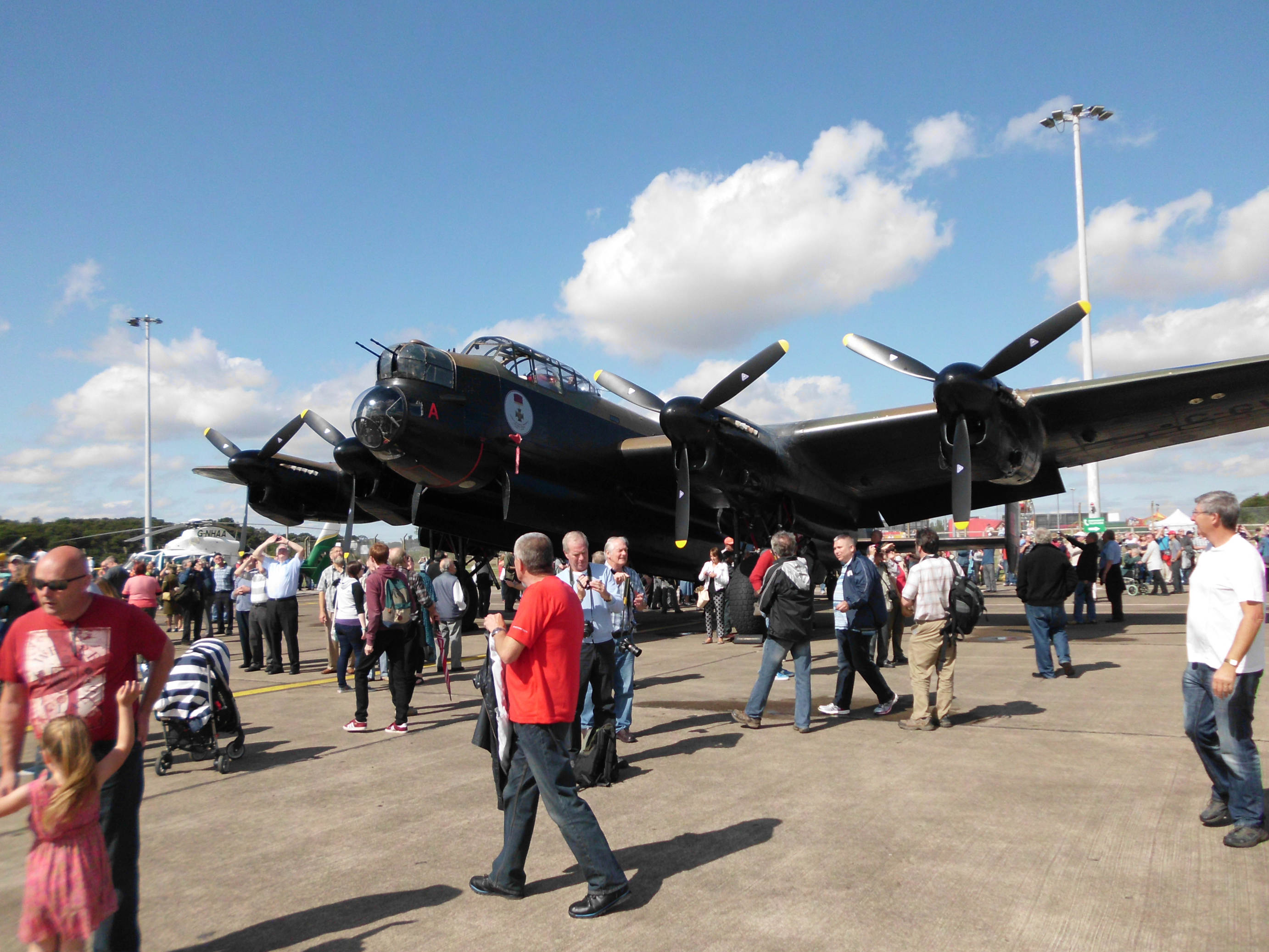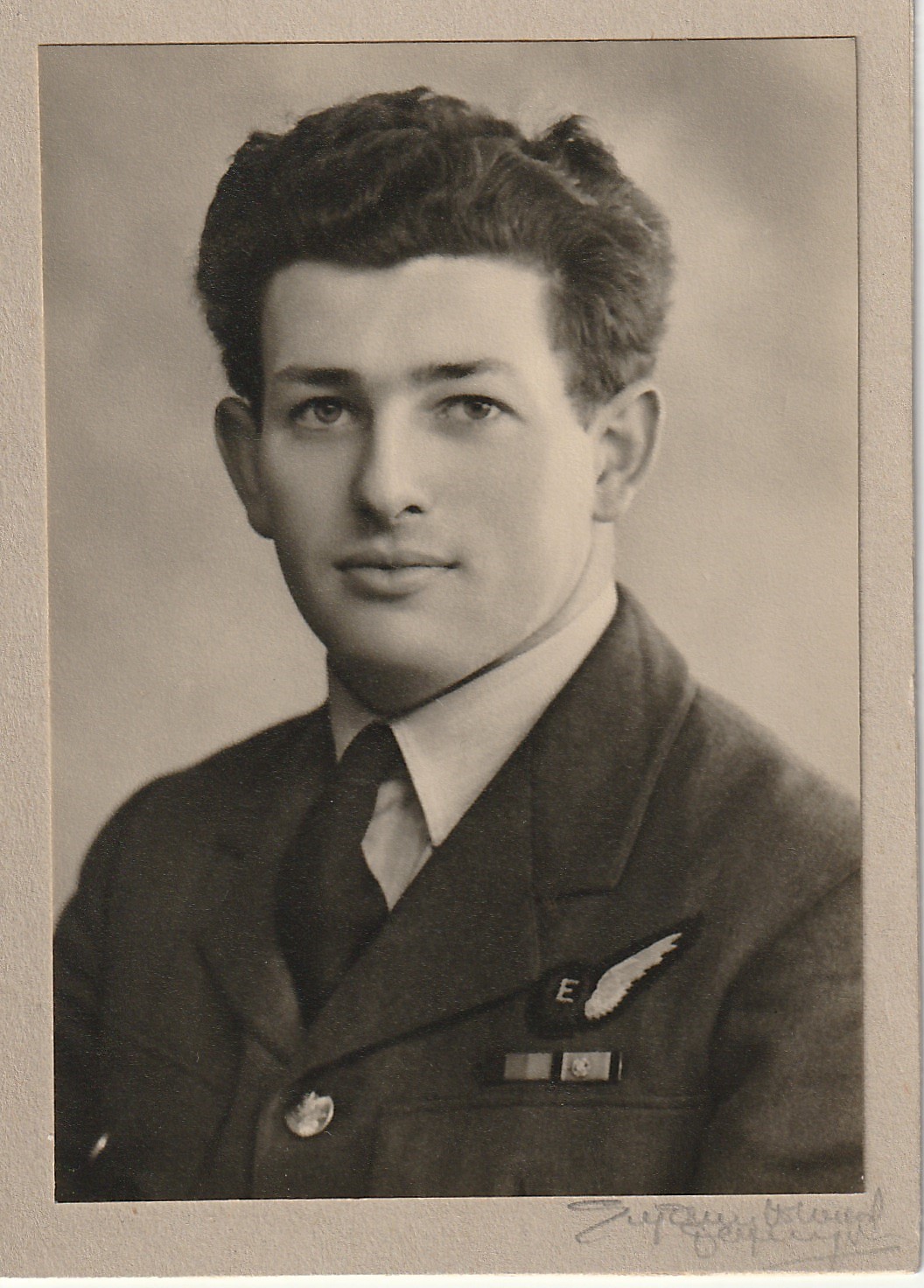Enlistment
Born on April 20th 1923 in Canada, David Harris joined the RAF on January 14th 1942. Volunteering for aircrew as
a Wireless Operator. He was deferred until June of '42 when he was placed in training as a Fitter and completed
his training for this ground crew trade at just the right time. As someone who was determined to be part of an aircrew
the opportunity to fulfil this wish would soon come his way.
A New Trade and a New Opportunity
The new trade, Flight Engineers, was established in 1941 by Air Ministry Order A190/41. The exact duties of the
F/E at this point had not been fully detailed. It would not be until August of 1942 via Air Ministry
Order A978/42 that the duties of the Flight Engineer were set out.
1/ To operate certain controls at the Engineers station and watch appropriate gauges as indicated in the relevant Air Publications.
2/ To act as Pilot's Assistant
3/ To advise the captain of the aircraft as to the functioning of the engines and repairs during flight, the fuel, oil and cooling systems.
4/ To ensure effective liaison between the captain of the aircraft and the maintenance staff, by communicating to the latter such technical notes regarding the performance and maintenance of the
aircraft in flight as may be required.
5/ To carry out practical emergency repairs during flight
6/To act as stand-by Gunner
The original candidates for the Flight Engineer trade were taken from RAF ground crew Fitters II, which placed Harris
in a position to again apply for aircrew.
Training and Selection
Future Sgt.Harris had followed one of three paths into the trade, Flight Engineers also came from the RAF Apprenticeship
program and from those who directly enlisted as Flight Engineers.
As a Flight Engineer he would have to know all that there was to know about his aircraft and theories of flying.
The future F/E would be sent
to No. 4 School of Technical Training at RAF St. Athan.
Here the trainees would be expected to have memorized every system on the aircraft, how it worked,
how to fix it,
and where it was located on the aircraft. The list of his systems he would be required to know were, fuel systems, instrument
panels, electrical, hydraulics, flight controls, engines as well as pneumatics.
And to be able to find them in the dark under potentially stressful conditions!
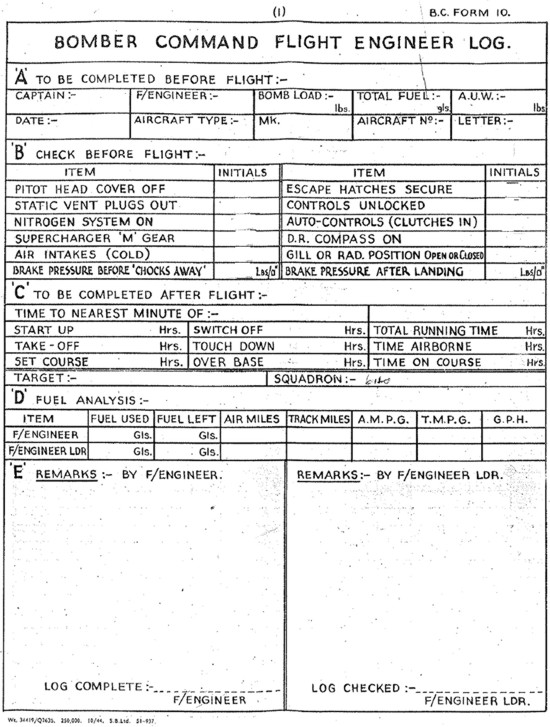
The Flight Engineer was also responsible for the pre-flight check with the pilot, including checking that repairs listed in the
Snag book had been completed.
The F/E had the ability to converse technically with the ground crew which aided both in correcting problems.
Although it
was the pilot's duty to sign the Form 700 to "borrow" the aircraft from the ground crew for the
night it would be the
Flight Engineer who was behind the scene.
During the flights he was required to complete a Log entry for the whole flight.
This Log would later be read and scrutinized by the Squadron Engineering Officer.
As part of their training the Flight Engineers would be sent to the factories where the Halifax or Lancaster
were built to give them a greater insight on how the aircraft was assembled and a glimse at some parts which may not have
be seen once the aircraft had been completed.
One other step in his
training was
the effects of Hypoxia, the lack of oxygen. The trainees were placed in a decompression chamber then they observed
each other's reactions as the air was slowly removed.
This experience gave them a quick and practical lesson on what to look out for if a crew man's oxygen supply was lost, or as
sometimes happened they were not wearing it correctly.
By the end of September 1943 Sgt. David Harris had earned his "E" badge worn by Flight Engineers. Based
on the Air Gunners badge, which in turn had been based on the Observers badge.
419 Squadron and The MacLean Crew
His next posting would be to No.1664 Heavy Conversion Unit. Here he would join the already established crew of
P/O Don H. MacLean after a short period of flying exercises and getting used to the new heavy bomber the crew were ready
for posting to an operational squadron.
Sometime prior to late September Sgt. Harris and the rest of the crew arrived at 419 Squadron, taking their first
operation together on the night of October 3/4 1944.
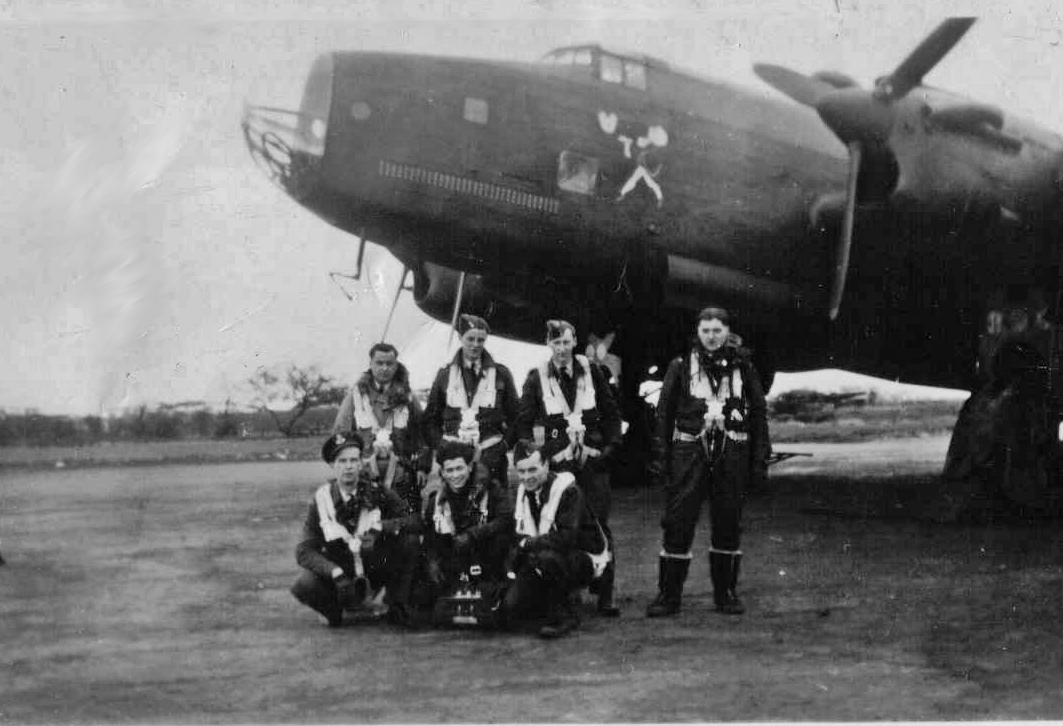
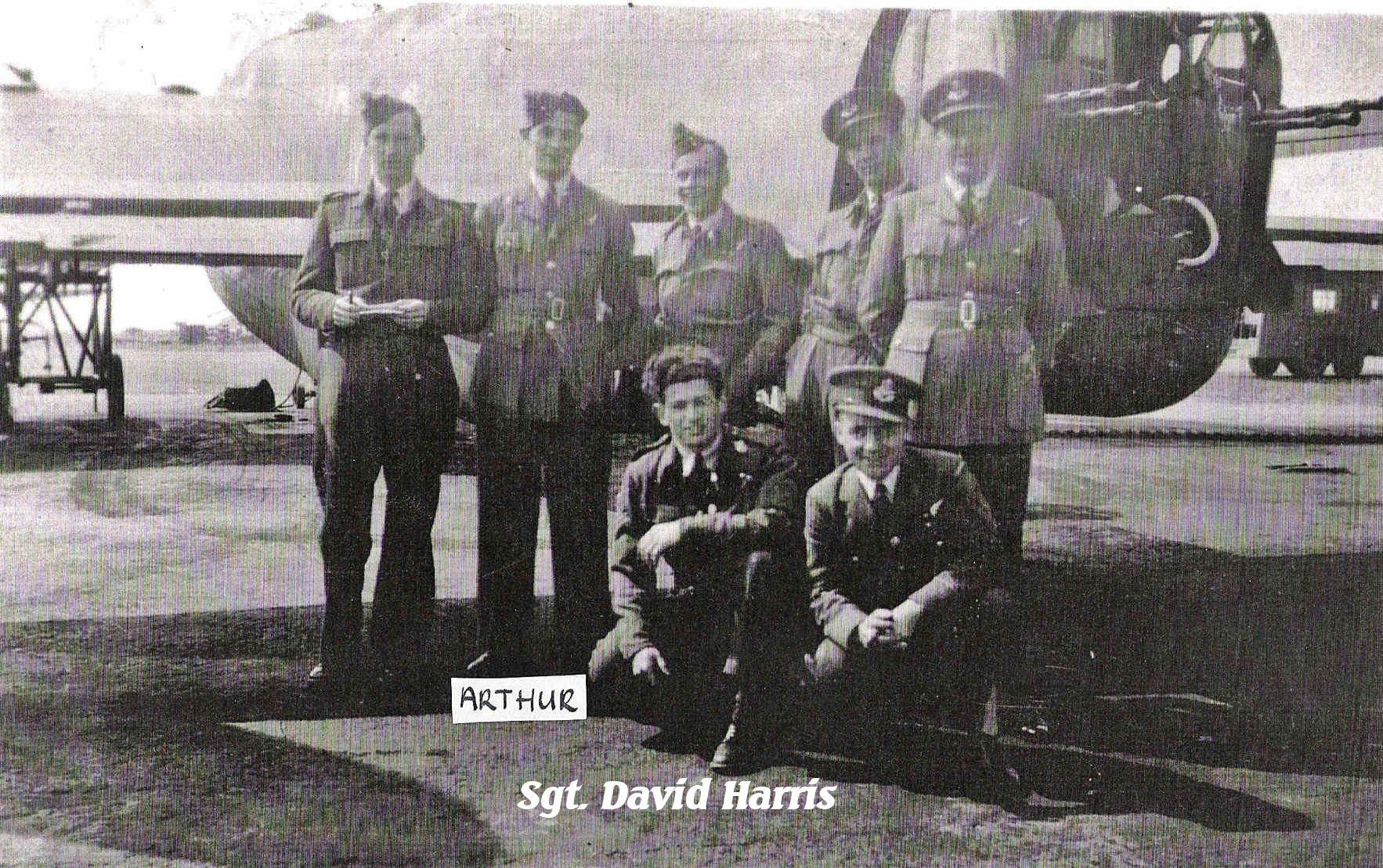
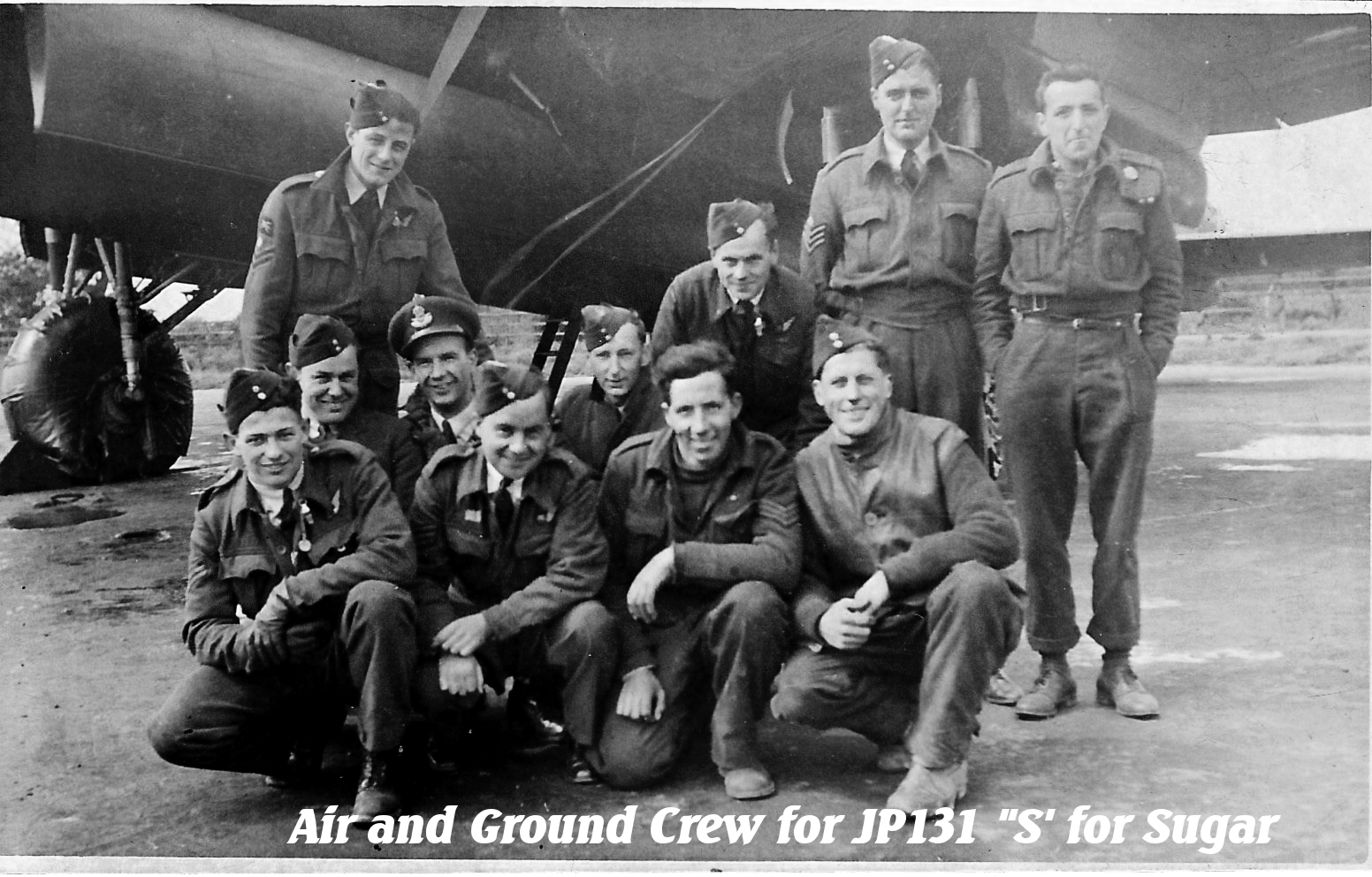
Here with the The MacLean crew Sgt. Harris would complete his first
Tour. His Halifax JP131, with the nose art depicting a butler with a serving tray perhaps with "Sugar", would bring them home
safely from their numerous sorties. They completed their Tour flying a number of different
Canadian made Lancaster X.
Continuation of Service
Sgt. Harris was posted back to No.1664 HCU as an instructor after leaving 419 Squadron.
After the war he stayed on as an instructor with the RAF.
During one of these instructional exercises in December of 1948 the bad weather caused icing of the Lancaster he and six others were on.
The pilot and Harris were unable to gain enough altitude to clear a hillside. The Lancaster crashed into the hill, if they had managed to gain
another 20 or so feet the crew including Sgt. Harris would have survived.
VErA Visits
The visit by the Canadian Lancaster to Britain brought out many ex-airmen and their families. Who along with so many others
went to see the two remaining Lancasters fly together.
Along with surviving members of his crew, the Harris family attended the events at Middleton St. George.
The experience something that they would always remember. ( At least two other former 419 Squadron Flight Engineers saw VErA
while it was in Britain)

